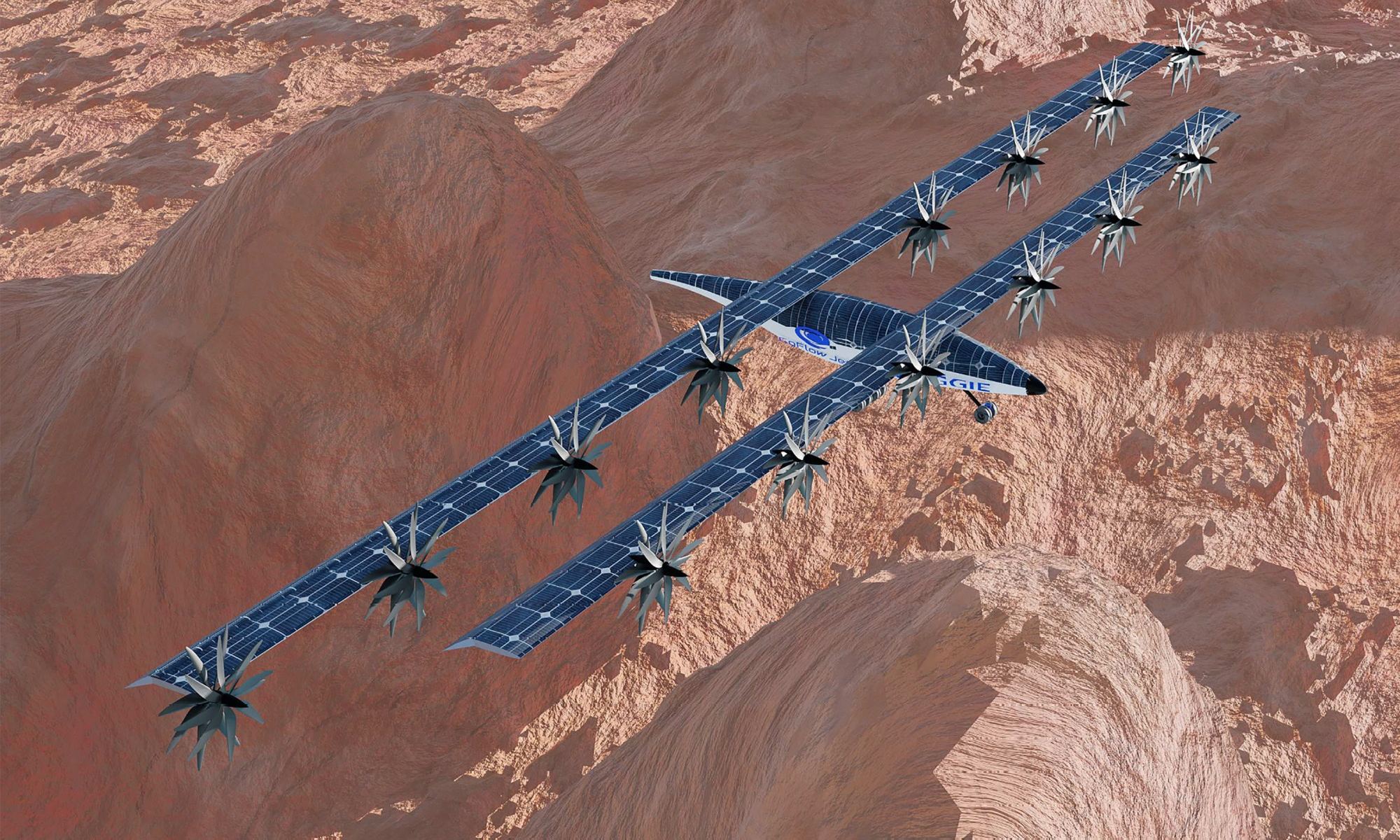Since 1998, the NASA Innovative Advanced Concepts program has fostered innovation by accepting new and unconventional proposals from the scientific community. Those selected are awarded funding to conduct early-stage technology studies that could lead to applications that help advance the agency’s scientific and exploration objectives. In a recent press statement, NASA announced the 13 concepts it has selected for Phase I development, which will receive a combined award of up to $175,000 in grants to assess the concepts’ feasibility and develop the technology further.
This year’s selectees range from a sample return from the surface of Venus, a fixed-wing aircraft for Mars, a swarm of probes to travel to Proxima Centauri and explore its system of exoplanets, and more. One of the more eye-catching is the Mars Aerial and Ground Global Intelligent Explorer (MAGGIE) proposed by Ge-Cheng Zha, a Professor of Aerodynamics at the Univeristy of Miami and the President of Coflow Jet LLC. The concept calls for a compact, fixed-wing, solar-powered aircraft capable of vertical take-off and landing (VTOL).

Through the NIAC, NASA maintains a strong tradition where game-changing proposals submitted by the public became missions that made crucial contributions. As NASA Associate Administrator Jim Free said in the statement:
“The daring missions NASA undertakes for the benefit of humanity all begin as just an idea, and NIAC is responsible for inspiring many of those ideas. The Ingenuity helicopter flying on Mars and instruments on the MarCO deep space CubeSats can trace their lineage back to NIAC, proving there is a path from creative idea to mission success. And, while not all these concepts will fly, NASA and our partners worldwide can learn from fresh approaches and may eventually use technologies advanced by NIAC.”
According to Zha’s proposal paper, the inclusion of the CoFlow Jet (CFJ) deflected slipstream technology means that MAGGIE will be capable of cruising at Mach 0.25 (~300 km/h; 190 mph) with a cruise lift coefficient (CL) of 3.5 – nearly an order of magnitude higher than conventional subsonic aircraft in Mars’ thin atmosphere. A fully charged battery would last 7.6 Martian days (sols), giving MAGGIE a range of 179 km (111 mi) at an altitude of 1,000 m (3280 ft). The total range of MAGGIE for an entire Martian year – which works out to 668 sols or 687 Earth days – is 16,048 km (9972 mi). As Zha told Universe Today via email, the proprietary CFJ technology consists of three elements:
“First, CoFlow Jet (CFJ) active flow control enhances lift coefficient, which is needed to overcome the low air density on Mars (1% of that on Earth). Conventional lift coefficient will not be able to lift a useful payload. Second, CFJ removes flow separation or stall. Due to the low air density on Mars, the Reynolds number is very low, which makes the Aircraft prone to flow separation and stall. If the aircraft stalls, the aircraft will crash, and the game is over.
“Third, CFJ enables deflected slipstream, which is the flow pulled by the propeller. It can turn the flow 90 deg downward so that the VTOL aircraft does not need to tilt the propellers upward at hover. The propeller will remain at the forward-facing position like the at cruise. The CFJ is used in the flap to turn the flow. It makes the VTOL aircraft much simpler than conventional aircraft.”

The mission profile envisioned here would consist of three atmospheric and geophysical investigations. These would explore how long Mars had a magnetic field, the source of methane signals detected by the Curiosity rover in the Gale Crater, and in-depth mapping of the subsurface water ice observed around Mars’ mid-latitudes. Its reliance on solar energy also means that the mission (barring an accident) could remain operational indefinitely. In short, MAGGIE would be able to perform the first global-scale atmospheric mission of Mars and would be the first concept to enable the ongoing exploration of the Red Planet.
“It has a global scale range. It can go anywhere on Mars,” said Zha. “All the previous rovers can only explore a point on Mars. Their ranges are very limited. MAGGIE can not just do the examination on the ground surface, but also examine the atmosphere since it flies.”
The professor also noted how his concept pays homage to the Ingenuity helicopter, which effectively demonstrated the potential for airborne missions on Mars. MAGGIE, he claims, would be similarly engaging to the public because of its audacious nature and the variety of environments it could explore, study, and image. In keeping with the proud tradition of NASA Spinoff, Zha also noted how developing this concept for investigating extraterrestrial environments will have applications for VTOL technologies here on Earth:
“Currently, there is a big movement on Earth to develop eVTOL for urban air mobility. They all need to use tilt rotors, tilt wings, and lift-plus-cruise. It is heavy, draggy, and inefficient. Using the same technology of CoFlow Jet deflected slipstream of MAGGIE, we can improve the efficiency of the eVTOL on Earth significantly.”
Further Reading: NASA

